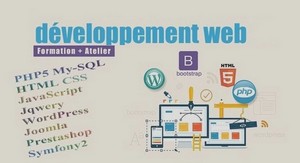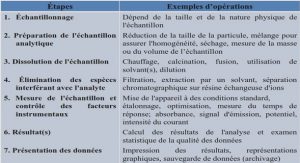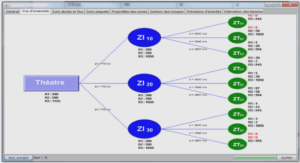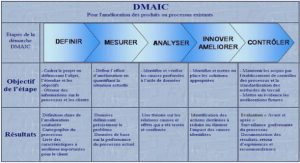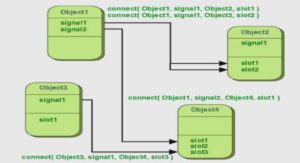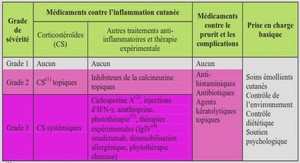The present chapter aims at presenting some aspects of the sociolinguistic situation in Algeria. It highlights the different periods which marked the history of the country, and the role of the various invaders who participated in the shaping of the sociolinguistic profile of Algeria. It also points out the components of the verbal repertoire of the Algerian speech community: Standard Arabic, Algerian Arabic, French and Berber, and the different statuses given to them. We will also point out some preliminary general information on Berber with a particular interest to the issue of its unity and diversity, and its geographical distribution in the country. Besides, this chapter is also an attempt to discuss briefly the sociolinguistic situation in Algeria in terms of Diglossia, Bilingualism, Code Switching, Code Mixing, and Borrowing.
A Brief Historical Background of Algeria:
Throughout different periods of its history, Algeria was the object of many invasions and conquests which favoured the coming of many peoples, and the establishment of various cultures, civilisations, as well as different languages.
Algeria was originally marked by the Berber presence, followed by the Carthagi civilisation established by the Phoenician traders who came to North Africa. After being successively defeated by the Romans in the Punic wars, Carthage declined and Romans took control of the area. Six centuries later, Vandals came to substitute the Roman Empire in Algeria. Berber, Punic and Latin were then the languages in use at that time.
After a settlement of more than a century, the Byzantines put an end to the Vandal domination. Some years later, the Byzantine control was finished by the invasion of the Arabs. The Arab conquest‟s aim was to implement and introduce the Arabic language and the Islamic religion. By the end of the 15th century, Algeria knew the Spanish settlement which, after a considerable period of time, was followed by the Ottoman Empire who came to save Islam and put Algeria under the Turkish protectorate until 1830, during more than 300 years.
The Turkish rule was ended by the French, who occupied Algeria for the period going from 1830 to 1962, within which they could influence the Algerian society both at the cultural and linguistic levels.
Because of the various civilisations established in Algeria, the original and successive inhabitants were exposed to different languages. This has made of Algeria a bilingual country. Among all the above cited languages only three still have a deep impact on the Algerian society: Berber with its varieties, Standard and colloquial Arabic, and French.
Today’s Algerian Verbal Repertoire:
Similarly to most Maghreb‟s countries, Algeria has always been characterised by the existence of many linguistic varieties. The languages of today‟s Algeria may be classified as follows:
Arabic:
Arabic may be represented as the following:
Standard Arabic:
It is the official language of all Arab countries where it is used in the oral and written form on formal settings and official circles.
The wide range of Arabic varieties all over the Arab World is mainly divided into Eastern and Western vernaculars. The fact that colloquial Arabic in the Orient is highly influenced by English goes back to the English colonisation of the Middle East countries, and their economic relations with the English speaking countries. While the deep impact French has on the Maghreb dialectal Arabic is related to the fact that some North African countries were colonised by France, and to the economic and cultural exchanges between these countries and France. These influences and differences are reflected throughout different contact phenomena and processes such as the phonological, morpho-syntactic adaptation of some borrowings.
Modern Standard Arabic may be roughly classified as a modern version of Classical Arabic, with additions from foreign languages that are suitable to the scientific and technological needs of modern life. Ennaji (1991: 9) states in this vein that:
“Modern Standard Arabic is standardised and codified to the extent that it can be understood by different Arabic speakers in the Maghrib and in the Arab World at large. It has the characteristics of a modern language serving as the vehicle of a universal culture” .
Algerian Arabic:
Algerian Arabic is the mother tongue of the majority of the Algerian population. It represents the language of daily use. It exists in various forms which consist of regional varieties. We can distinguish three major regional varieties: the eastern variety, the western one, and the central one .
Algerian Arabic reflects the folk‟s culture and oral heritage of popular songs, stories and sayings. Taleb Ibrahimi says that: “These Arabic dialects constitute the mother tongue of the majority of the Algerian people (at least for those who are originally Arabic speakers), the language of the first socialisation, of the basic community. It is through it thatthe imaginary and the affective universe of the individual is built up.” Taleb Ibrahimi (1995:33) .
Educated Spoken Arabic:
The phenomenon of diglossia has given birth to a middle variety called “Educated Standard Arabic”. It can be used by educated people for communication in semi-formal situations such as interviews. It is a modernized and simplified version of Standard Arabic which serves for formal written and spoken communication in the media, politics, and business.
French:
The wide spread use of French in different domains such as education, administration, press, the mass media and family reveals that this language is deeply implanted at both formal and informal levels, and remains a significantly important language in Algeria , in spite of the official marginalisation and the concentrated efforts made by the government to get rid of it.
It is undeniable that many Algerian speakers are influenced by French culture and language. In an attempt to describe the linguistic situation in Algeria, Bouhadiba (1998: 1_2) asserts that French is “Strongly implanted at the lexical level”.
A great number of French borrowings, both adapted and non-adapted, can be attested in the verbal repertoire of many Algerian speakers. Algerian Arabic has been influenced by French to the extent that some Algerian Arabic sociolinguists like Bouamrane (1986) talk about “Franc-Arabic” when referring to AA.
In Algeria, it does not sound weird at all to hear people saying utterances where we find a great number of French words:
(1) Eg : /ʒ ӕtni/ une crampe /fi/ mon cœur la nuit passée (I had a heart cramp last night) The impact French has on Algerians‟ verbal repertoire can also be observed in their frequent use of the “ready-made” phrases such as: “C’est bon” (It‟s alright) which can be employed in sentences like:
(2) C’est bon /sǝ gamtha/ (It‟s alright, I repaired it) Despite the process of “arabisation” that Algeria has known after independence and which aimed at the implantation of the Arabic language in the Algerian society, French could remain as one of the languages of education in Algeria. The rich specialized registers it possesses make of it the language of modernity and give it a considerable prestige in society.
Taleb Ibrahimi (1995:108) says that it is:
“The language of modernity, techniques, the language of social promotion, the language of opening on the world” .
In fact, it is the language of techniques in the sense that scientific and technological university studies such as medicine and architecture are taught in French, since the related technical terminology is available in this language. It is also the language of social promotion in the sense that individuals who master French are well considered.
General Introduction |
